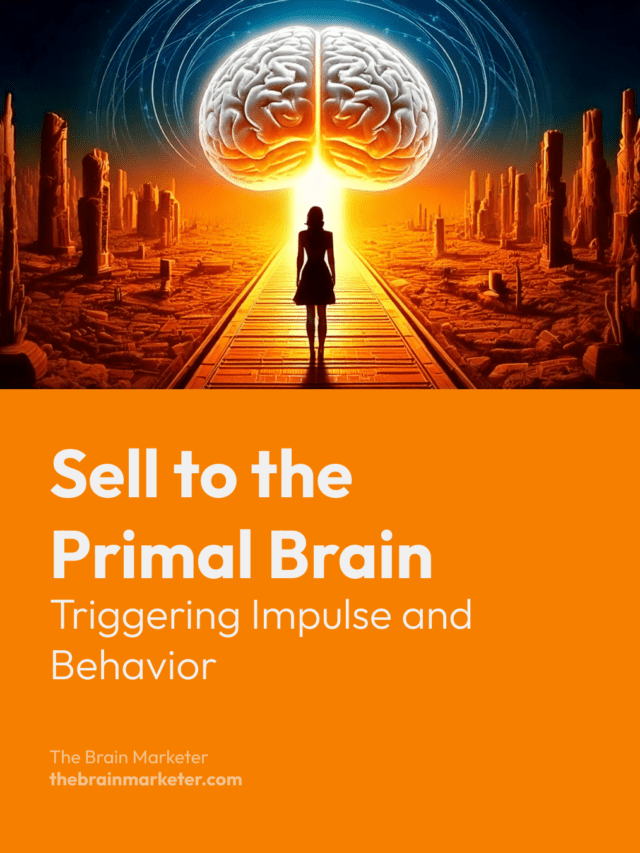The primal brain—our most ancient and instinct-driven part of the brain—plays a crucial role in decision-making. Marketers can leverage this by crafting messages that speak directly to this part of the brain, triggering impulsive actions and driving consumer behavior. But how exactly do you sell to the primal brain? Here are the six key messages you need to send to influence it effectively.
Key Takeaways
- The primal brain is instinct-driven and responds to clear, emotional messages.
- Capture attention with bold visuals and strong contrasts.
- Provide a clear overview and emphasize your unique value.
- Use proof to build trust, eliminate objections, and create urgency.
🎙️ Unpack the Topic with this Podcast
Understanding the Primal Brain
The primal brain is the oldest part of our brain, responsible for survival instincts, fast decision-making, and emotional reactions. It is automatic, reactive, and always on the lookout for opportunities and dangers. Understanding its functions is crucial for marketers aiming to create persuasive messages.
1. Capture Attention
The primal brain is constantly scanning the environment for threats, rewards, or anything that stands out. This makes attention-grabbing content crucial. Bold visuals, strong contrasts, and unexpected elements can help capture the primal brain’s attention within seconds.
Red Bull uses high-energy visuals in their extreme sports sponsorships, such as cliff diving and Formula 1, which instantly grab attention by tapping into excitement and survival cues.
Application Tips
- Leverage surprise or novelty to create an instant connection.
- Use bold headlines, contrasting colors, or visuals that stand out.
- Keep messages short and impactful.
2. Provide an Overview
Once attention is captured, the primal brain seeks a quick understanding of the situation. It needs to see the big picture and how it all fits together. Simplify complex information into digestible, clear messaging.
Apple excels at simplifying their technology. During product launches, they provide concise overviews of how their new devices, like the iPhone, fit seamlessly into daily life.
Application Tips
- Avoid technical jargon—focus on user benefits.
- Use clear, straightforward language.
- Provide a brief, visual representation of your product or service.
3. Present Your Claims (or Differences)
Highlight what makes your product or service stand out. What’s unique about your offering? The primal brain is drawn to differences because they help it make quick decisions.
Dyson emphasizes their superior engineering, such as their vacuum cleaners’ “no suction loss” technology, which sets them apart from the competition.
Application Tips
- Make your claim visible and undeniable.
- Emphasize your unique selling proposition (USP).
- Use clear, bold statements that highlight your advantages.
4. Show Proof of Your Value
The primal brain is skeptical—it needs to see evidence before trusting your claims. That’s why proving your value with data, testimonials, or concrete results is crucial.
Crest often uses “before-and-after” comparisons in their ads to prove the effectiveness of their whitening toothpaste.
Application Tips
- Showcase expert endorsements if relevant.
- Use customer reviews, case studies, or statistics.
- Leverage visual proof, such as before-and-after images.
5. Eliminate Objections
The primal brain instinctively looks for potential risks or problems. Address common objections and concerns directly to ease this resistance.
Zappos eliminates purchase hesitations with a 365-day free return policy, directly addressing consumer fears.
Application Tips
- Offer guarantees or flexible return policies.
- Include an FAQ section to address common concerns.
- Use clear, reassuring language to ease doubts.
6. Lock In the Decision
Once the primal brain feels safe and convinced, it’s time to lock in the decision. Trigger action with a clear and strong call to action.
Amazon uses urgency with “Today’s Deals” and limited-time offers to create a sense of scarcity.
Application Tips
- Make the next step obvious and effortless.
- Use a simple, direct call to action like “Buy Now” or “Sign Up Today.”
- Create urgency through limited-time offers or exclusive deals.
Conclusion: Selling to the Primal Brain
By crafting your messages to align with the primal brain’s instinctive responses, you can significantly influence consumer behavior. From capturing attention to locking in the decision, each of these six steps speaks directly to the part of the brain that drives impulse and action. The primal brain is fast, emotional, and always on the lookout for survival, so appeal to it with clarity, proof, and urgency.
Sources
- LeDoux, J. E. (1996). The Emotional Brain.
- Gazzaniga, M. S. (2008). Human: The Science Behind What Makes Us Unique.
- Cialdini, R. B. (2006). Influence: The Psychology of Persuasion.
- Zaltman, G. (2003). How Customers Think.
- Lindstrom, M. (2009). Buyology.
- Ariely, D. (2008). Predictably Irrational.

Vincent Heimann is a marketing project manager and neuromarketing enthusiast. He founded The Brain Marketer to bridge neuroscience and marketing through accessible, science-based content. With over 10 years of experience in digital strategy, UX/UI and communication, he shares practical insights to help brands connect with the human brain — ethically and effectively

